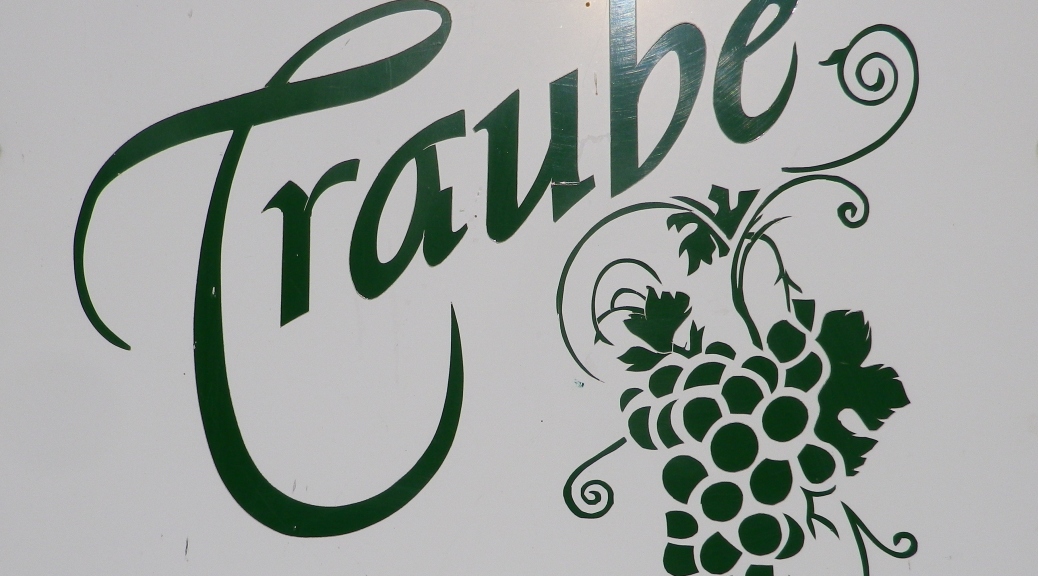What I Learned:
In Germany, the Moselle River valley vintners vie with the Rhine River valley vintners for producing great quality Rieslings. It is certainly Germany’s second-most well-known river, running as it does some 250 kilometers/155 miles from the French-Luxembourg border to the Rhine. Although less well-known and shorter than the Rhine, the Moselle can claim to be Germany’s oldest wine-producing region.
As I mentioned in an earlier post (here), wine growths along the Moselle River valley, are classified into three sections: The Upper Moselle area, the Middle Moselle area, and the Lower Moselle.
The entire length of this river, while known in English and French as the “Moselle”, is known as the “Mosel” in German. The Middle Moselle area, also known in wine parlance as the Bernkastel District, runs from Trier to around the village of Briedel.
It includes the town of Bernkastel-Kues, and the world famous wine village of Urzig, with its renowned Wurzgarten vineyard. In this section of the Moselle, the vines grow in soils derive primarily from Devonian slate. However, Urzig and its surrounding vineyards, sit on soil of volcanic origin. Rieslings from here result in flavors unique in the Riesling world.
Some of the most famous vineyards in Germany are here. The town of Bernkastel has one of the most famous: the Bernkasteler Doctor. It lies high above the town, on a steep, south-facing slope. The wines from this small plot are exclusively Rieslings, and are some of the most expensive Rieslings in Germany. Other famous vineyards in the district include Enkirch’s Batterieberg and Steffensberg; Kinheim’s Rosenberg; Wolf’s Goldgrube; Erden’s Treppchen and Praelat; the Wehlener Sonnenuhr; Zeltingen’s Schlossberg, Sonnenuhr and Himmelreich; Graach also has a vineyard named Himmelreich; and last, but not least, Urzig’s Wurzgarten.
This section of the Moselle also includes the village of Traben-Trarbach, once the second most wine-exporting town in Europe after Bordeaux! To meet this demand, miles of underground caves were excavated in the late 1800s.
In addition to the Riesling grape, which accounts for approximately 61 per cent of all cultivated area in this region, other white varietals include Weisser Burgunder (Pinot Blanc), and Mueller Thurgau. Red varietals include Pinot Noir, covering 4 per cent of cultivated area, closely followed by Dornfelder.
What I Tasted:
2013 Weisser Burgunder, Trocken, Qualitaetswein, Weingut Hans Beth, Kroev; a dry white wine with dark medium gold color; floral notes and notes of ripe apricots, very mild acidity, very well-balanced overall.
2013 Riesling, Trabener Gaispfad Kabinett, Trocken, Weingut Weiser-Kuenstler, Traben-Trarbach; a dry white wine with dark-medium gold color; layers of flavors starting with a light citrus note, followed by a sweet Granny Smith green apple note, and a hint of lychee; refreshingly tangy on the tongue – but very mild acidity; a slight touch of minerality comes through on the finish; another well-balanced wine.
2011 Riesling, Haus Klosterberg, Markus Molitor: a dry white wine with medium gold color: honey and floral notes, hints of apricot, medium-bodied wine with mild acidity.
2009 Riesling, Grosse Lage Marienburg (Puenderich), VDP, trocken, Weingut Clemens Busch; a dry white wine with dark medium gold color, minerality on the nose; explosion of flavors to include, vanilla, grilled pineapple, toast, and bacon! Very mild acidity, extremely well-balanced overall.

One thought on “Wine Notes: The Moselle’s Bernkastel District”
Comments are closed.